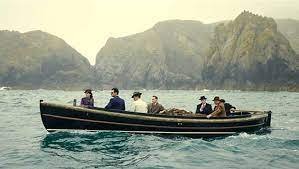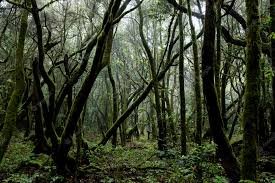Writing Atmosphere, Part One by Cindy R.X. He
In literature, atmosphere is the way we use thoughtful description of the environment or setting, objects, and characters’ thoughts to convey moods to and evoke feelings in readers.
Atmosphere is important because when readers finish a book, while they won’t remember the exact words used or plot details (even character names might eventually be lost to time!), they remember how it made them feel.
In this three-part series, I’ll be exploring the literary techniques on how to write atmosphere.
Note that while the examples provided will be mostly from stories in the thriller and horror genres (because these are the genres I’m most familiar with), atmosphere could and should be written thoughtfully for all genres.
Writing Atmosphere 1: The Setting
Writing Atmosphere 2: The POV, and Word Choice
Writing Atmosphere 3: Figurative Language
Writing Atmosphere 1: The Setting
When choosing the setting for your scenes (aka where the story takes place), consider the mood you would like to impress on the reader.
Excerpt from Agatha Christie’s And Then There Were None:
‘Fred Narracott shut off the engine, they nosed their way gently into a little natural inlet between rocks.
Philip Lombard said sharply:
“Must be difficult to land here in dirty weather.”
Fred Narracott said cheerfully:
“Can’t land on Soldier Island when there’s a southeasterly. Sometimes ‘tis cut off for a week or more.”
Vera Claythorne thought:
“The catering must be very difficult. That’s the worst of an island. All the domestic problems are so worrying.”
The boat grated against the rocks. Fred Narracott jumped out and he and Lombard helped the others to alight. Narracott made the boat fast to a ring in the rock. Then he led the way up steps cut in the cliff.
General Macarthur said:
“Ha! delightful spot!”
But he felt uneasy. Damned odd sort of place.’
Ignoring the unfortunate overuse of adverbs for dialogue tags, and odd structuring for dialogue (understandable since the book was first published in 1939), we can see how setting the entire story on a rocky, desolate island with no way off evokes a sense of isolation and danger.
Ten isolated people, unsuspecting of the danger they’re in
Similarly, the atmospheric setting in Tana French’s In The Woods plays a crucial role in evoking a sense of mystery and unease throughout the novel:
‘The wood is all flicker and murmur and illusion. Its silence is a pointillist conspiracy of a million tiny noises – rustles, flurries, nameless truncated shrieks; its emptiness teems with secret life, scurrying just beyond the corner of your eye…
…who is waiting on the riverbank with his hands in the willow branches, whose laughter tumbles swaying from a branch high above, whose is the face in the undergrowth in the corner of your eye, built of light and leaf-shadow, there and gone in a blink?’
So creepy
The foreboding woods are a central element in the book, a perfect backdrop for the dark secrets and crimes that are slowly unearthed as the story unravels.
Imagine how altered the tone would be if the story was set in a bustling city, for example. The story would not be quite as haunting as it is right now.
Finally, the setting can be different for different scenes in the book. By being conscious of how scenes are described, we can effectively show how the atmosphere in a story changes, as the story progresses.
Excerpt from my YA thriller, Perfect Little Monsters:
‘We step out of the car into the fog. It envelops us, clinging onto our exposed skin. It brushes my face, reaches down my neck with cold, wet fingers, and I shiver. Naomi shudders too, and pulls her cashmere cardigan more tightly closed. As we trudge toward the front of the cabin, the white, naked limbs of the paper birch trees, and the dark, straggly black walnut trees loom over us, shrouded in the mist, deformed and grotesque. Other than the little snaps and crackle of twigs and pebbles crunching under our shoes, the place is completely silent. Almost as if it’s holding its breath, waiting for something to happen.’
You just know something very bad is about to happen
The eeriness of the setting for this scene builds a sense of unease, foreboding, and dread.
PRACTICE
Ask yourself: what kind of setting do you think would be the most effective for your story? And why?
Next up: Writing Atmosphere 2: The POV, and Word Choice
Cindy R. X. He is the author of Perfect Little Monsters, a YA thriller slated for release May 2024 with Sourcebooks Fire. You can buy it here.


